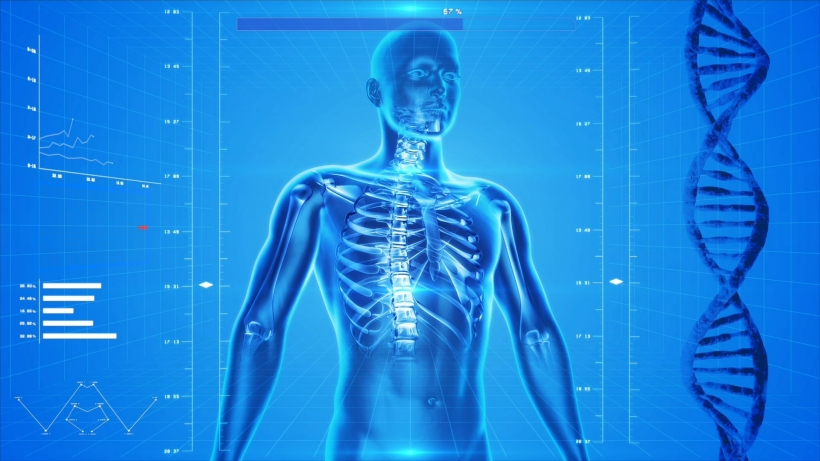- Aims of the Program
- The Anatomy and Physiological course aim to provide the students the following skills:
- Using anatomical and physiological terminology to all biological medicine studies
- Understanding the details of the fundamental structures and functions of the body
- The Anatomy and Physiological course aim to provide the students the following skills:
- Intended Learning Results and the ways in which they are met and shown:
- Knowledge and understanding
- When the course is completed, students will be able to:
- Demonstrate understanding of the basic aspects of anatomy and physiology
- Strengthen their understanding by reading more in-depth literature
- Having a thorough understanding of the anatomy of the body (organs and organ systems)
- Study blood tests, comprehend the outcomes, and apply them to the different physiological systems
- Students will have knowledge and understanding of the following:
- The body’s anatomical structures and their topography
- Every physiological system with its functions and pathology
- Macro and micro scales of anatomy and physiology
- Cognitive / Intellectual skills
- After finishing the course, students will be able to:
- Grasp all the fundamental concepts of anatomy and physiology
- Comprehend and visualize the diagrams and the structures of the body in 3-dimensions
- Understand the organization of living things, and the common characteristics humans have with animals, plants, and bacteria
- Learn the field’s terminology and its correct pronunciation
- Achievement of Learning Outcomes
- The previously mentioned outcomes can be achieved using the following techniques:
- Online Resources
- For an enhanced visual learning, various colors are used in the illustrations
- The anatomical structures are 3-D paintings instead of text
- Understand the various feedback systems—including the effectors, control centers, and receptors—and their function in regulating physiological circumstances
- Quizzes to provide students an opportunity to check their knowledge
- Tutoring
- Every student has access to a tutor whom they can approach and discuss their concerns
- Course assignments
- Before going on to the next phase of the course, the students have the chance to review each assignment
- Structures and requirements for the Program
- There are no required studies for this module.
- This module provides a comprehensive overview of the body systems and their functions in the human body.
- There are 25 assignments in all, each consisting of 10 true/false or multiple-choice questions.
- The grades for each assignment contribute towards the final mark.
- The Final Exam is an online test that is timed. This is a quiz consisting of 60 questions taken from the assignments.
- The final grade is calculated based on the work done in class, as well as the work done on the assignments.
- Course Curriculum
- The different sections of this article cover different aspects of the subject:
- Anatomical Language
- Organ Systems
- Axial Skeleton
- Appendicular Skeleton
- Joints and Synovial Joint Movements
- The Functions of Skeletal Muscles
- Spinal Nerves
- Brain Organization and Operation
- Unique Senses
- The Endocrine System
- Heart: The Cardiovascular System
- Blood Vessel Identification
- Lymphatic System
- Respiratory System
- The Digestive System
- Urinary System
- Male Reproductive System
- Female Reproductive System
- The different sections of this article cover different aspects of the subject:
These are the specifications of Anatomy and Physiological Course:
| 1. Awarding Institution / Body: | |
| 2. Teaching Institution: | Online and distance learning, with tutor support |
| 3. Programme Accredited by: | |
| 4. Final Award: | Compulsory course for the Bachelor’s degree in Naturopathy and Holistic Medicine |
| 5. Programme title: | Anatomy and Physiology |
| 6. Course Code and level: | BNHM6001 – Bachelor Level |
| 7. Duration of programme: | One trimester or 12 weeks |
| 8. Total number of study hours: | Equivalent to 10 US credits or 100 clock hours of study |
| 9. Enrollment requirements: | Students enrolled in the Bachelor’s degree |
| 10. Enrollment date: | First-year, First Trimester |
| 11. Fees: |
The specific lessons covered include:
- Lesson 1 – An Introduction to the Human Body
- Lesson 2 – The Chemical Level of Organization
- Lesson 3 – The Cellular Level of Organization
- Lesson 4 – The Tissue Level of Organization
- Lesson 5 – The Integumentary System
- Lesson 6 – Introduction to the Skeletal System
- Lesson 7 – The Axial Skeleton
- Lesson 8 – The Appendicular Skeleton
- Lesson 9 – Articulations
- Lesson 10 – Muscle Tissue
- Lesson 11 – The Muscular System
- Lesson 12 – Introduction to the Nervous System
- Lesson 13 – The Central Nervous System
- Lesson 14 – The Peripheral Nervous System
- Lesson 15 – Sensory, Motor and Integrative System
- Lesson 16 – The Special Senses
- Lesson 17 – The Endocrine System
- Lesson 18 – The Cardiovascular System: The Blood
- Lesson 19 – The Cardiovascular System: The Heart
- Lesson 20 – The Cardiovascular System: The Blood Vessels
- Lesson 21 – The Lymphatic System and Immunity
- Lesson 22 – The Respiratory System
- Lesson 23 – The Digestive System
- Lesson 24 – The Urinary System
- Lesson 25 – The Reproductive System
Course Materials:
– Images, videos, animations, assignments, and final exams can all be found online.


